Five Reasons to Use Natural Stone
Karl Doucas
Reprinted By Permission Picco Group
Contrary to common belief, it’s quite easy to build with stone. The use of natural stone on buildings and paving can be traced back to the beginning of civilization.
There are countless buildings, monuments, and structures dating back thousands of years that have stood the test of time and left generations in awe—like the great Pyramids of Giza in Egypt, the Mayan Temples in Mexico, the Parthenon in Greece, and the Coliseum in Rome. Many of these structures were built with no mortar; the stones were simply cut, tightly fitted together and laid atop one another—a method of stone installation mimicked in modern-day construction and referred to as “dry-stacked stone.” In many ways, our ancestors in the building industry applied sustainable practices by using the larger quarried blocks for building construction and smaller waste pieces for erosion control and walkways. They also used the gravel to pave small roads from town to town.
However: we have moved beyond the stone age! Few cladding materials last as long or perform as well as natural stone when it is properly specified and installed. Not only is natural stone beautiful; it is also a low-maintenance, sustainable material. A project that uses stone is simply borrowing it from the earth; at the end of its long-life cycle, stone can be returned to the earth where its creation process began.
Here are five reasons to Use Natural Stone for your next project:
1. Natural stone is a green material.
Natural stone’s inherent characteristics make it Mother Nature’s original green building product. It can be used without any additional finishes or wall coverings, has low maintenance needs, and is highly durable—and recyclable. Unlike the many cladding materials available on the market requiring extensive manufacturing energy, natural stone is extracted from the earth and processed by cutting and finishing.
Since building designs may be using more materials (and/or more carbon-intensive products) to achieve lower energy use, an increasing proportion of the total energy use and carbon emissions for high-performance buildings comes from its materials and products. By taking embodied energy into account, a project team can ensure it is designing for net carbon emission reductions. In the case of natural stone, this may consider the CO2 required in quarrying, transport to the plant, energy required for slabbing and fabrication, delivery to the site, and installation. Based upon most life-cycle analysis studies and comparisons, natural stone is consistently rated as one of the building materials with the lowest embodied energy across many metrics.
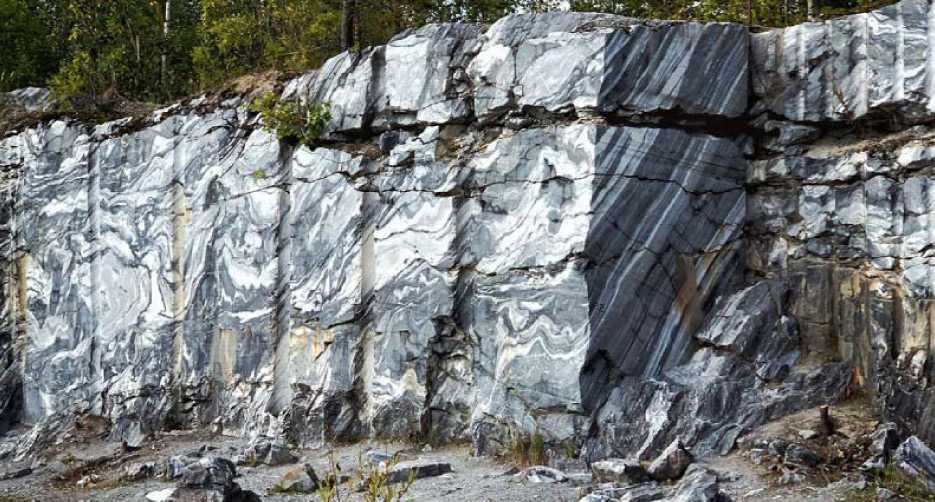 |
|
Marble quarry face. Natural stone is Mother Nature’s green building product. Image by Victor Malyusev via Unsplash |
2. Natural stone is readily (and globally) available.
Stone is available regionally and locally, with quarry sites within 500 miles of nearly any building site in the United States and Canada. It’s also abundantly available in nature.
At the time of this article, a Google search for “natural stone slabs” yielded 42,000,000 results. No matter where you go, around the world you will find beautiful buildings and structures that are characterized by their use of natural stone. The variety and diversity of stone is unparalleled by other hard surface materials. Even if natural stone is not the right selection for every project, it continues to offer limitless uses.
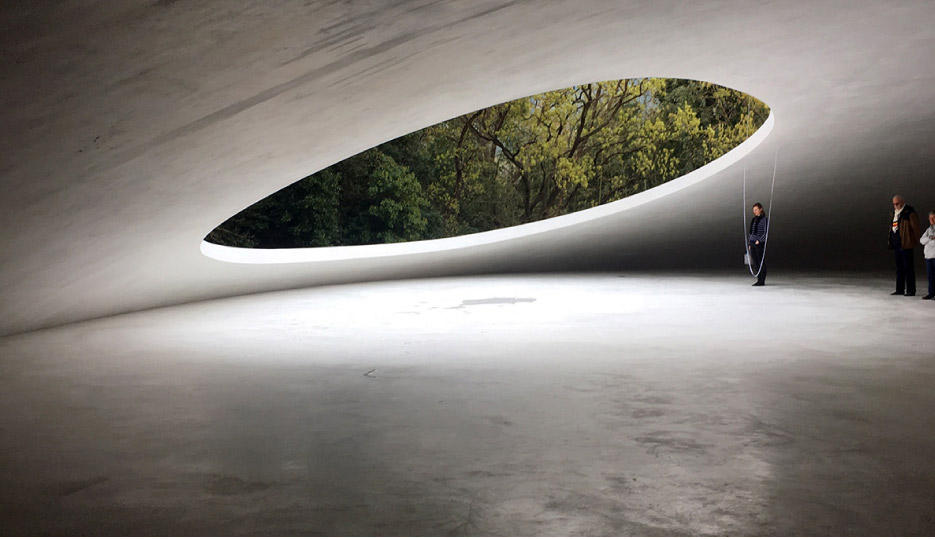 |
|
“The natural stone business in general is really focused on sustainability. The stone itself is a sustainable product as it is a very long-lasting building material. The manufacturing techniques and processes we use are always improving to reduce or reutilize waste, to reduce energy consumption, and to recycle water.” –Mike Picco, 2021 Natural Stone Institute Board President Image by Denis Kovalev via Unsplash |
3. Natural stone is varied.
By applying different finishes to the same native stone, designers can create an aesthetic variety without having to introduce a new material into the project. Unique finishing techniques applied to natural stone can create a range of tones and shades—varying from light to dark or muted to bold—achieving interest and contrast.
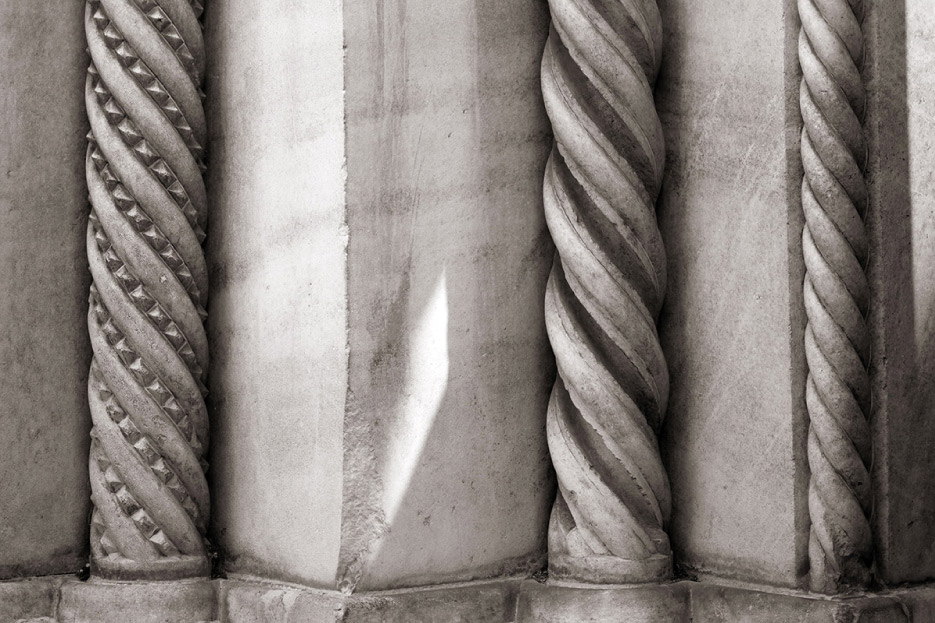 |
|
Every slab is unique. The finish applied to natural stone will have an important effect on how the material looks. While some choose a stone based on color alone, it’s important for the client to understand they are buying all the stone’s attributes—perceived flaws and all. Therefore, it is imperative during the selection process that the material be examined not only for color and pattern, but the surface looked at from all angles to evaluate its surface characteristics. Evaluating a stone’s composition will further introduce options for its use. The range in density, flexural and compressive strength, coefficient of friction, and other properties help define suitability for stone use as pavers, columns, lintels, and facades. Despite how much we know about stone through history and experience, we are learning more about its potential as a purely structural element, or its heat absorbing capability, sustainable merits, and its true abundance. Image by Jacob Casener via Unsplash |
4. Save money using natural thin stone veneer.
Natural stone use is not defined by trends. It is ubiquitous; although like fashion, some colors are more desired than others through time. Also like fashion, sometimes premium products get repackaged and repurposed to be made more affordable. Natural thin stone veneer is a form of natural stone veneer that has been sawn to approximately one-inch thickness with a ¼-inch tolerance allowed. To be classified as thin stone veneer, each piece must weigh less than 15lbs per square foot. The introduction of these sawn, lighter-weight pieces create ease of installation and provide the appearance of full-depth stone without sacrificing any of its beauty—typically used in exterior stone cladding, outdoor living features, and natural stone walls.
Natural stone ages well and retains its value. Whereas many building materials become unsightly over the course of many years, natural stone will transform with a natural patina. As an added benefit, it holds 93 percent of its original value at its peak, which is a higher percentile than most other cladding options.
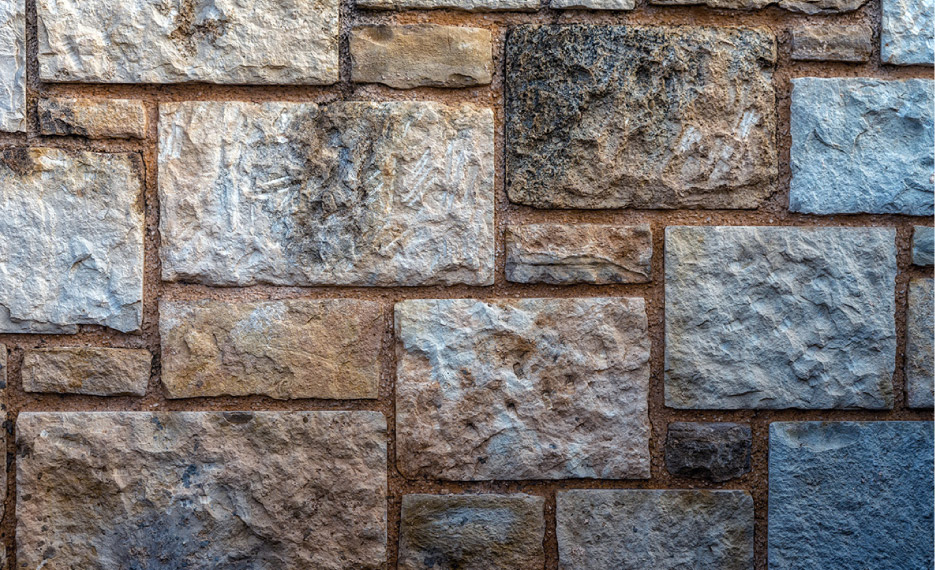 |
|
Image by Paul Zoetemijer via Unsplash |
5. Natural stone offers a great Return-on-Investment (ROI).
Did you know natural stone can be designed to last for 100 years or more? It offers many benefits such as longevity and quantifiable ROI when applied to flooring. Being the most long lasting material available, natural stones like marble are often used in office towers and hotel lobby areas where frequent disruptions to repair or replace a floor would have an adverse impact on customers. In the Waldorf Astoria Beverly Hills hotel lobby pictured above, PICCO coordinated and produced the stone shop drawings and fabrication tickets for the contrasting Italian marble inlaid with bronze, along with all the interior public spaces, presidential suite, counters, bases and tubs, and miscellaneous stone elements.
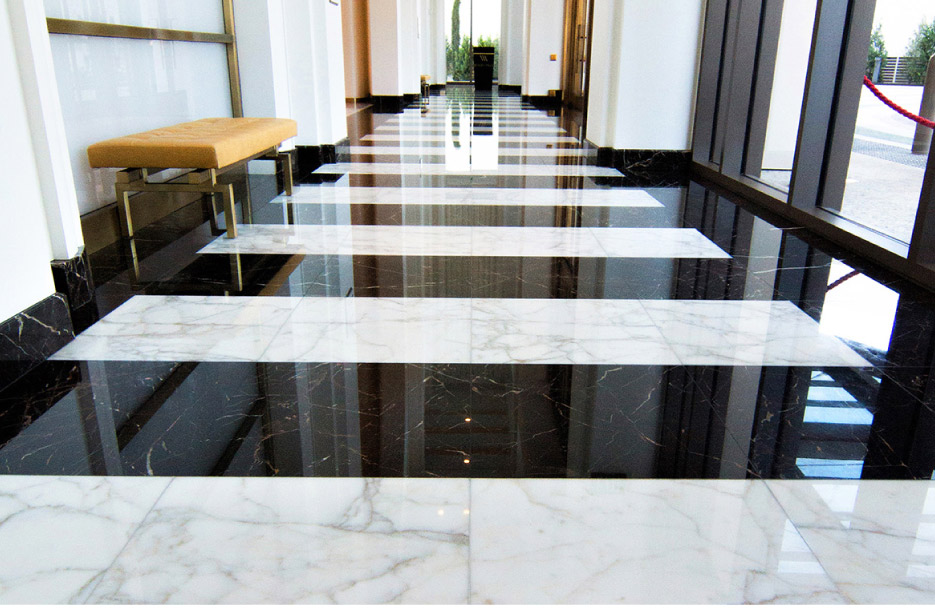 |
|
Lobby of the Waldorf-Astoria Hotel, Beverly Hills, CA. Image by Mike Picco of Picco Group |
Natural stone is versatile enough to achieve the aesthetic, performance, and cost goals on both the exterior and interior of your project over the long term. While it may seem that an engineered material might be lower maintenance than marble, it will never have the same depth, versatility, and range of color as natural stone. Natural stone is more resistant to scratches and staining than other materials. Applying an annual sealing process, combined with routine cleaning, will help to preserve its beauty and quality.
For more information about Picco Group, visit www.PICCOgroup.com .